“The best thing about the first minutes of the first day of school is nothing has gone wrong yet.”~ Aurora Petrequin, Anybody Here Seen Frenchie?
Why this Book? Why will it matter to kids?
Eleven year-old Aurora is as boisterous, impulsive, and plucky as her best friend Frenchie is silent, measured, and introspective. Through the heartwarming and at times humorous portrayal of this unlikely partnership, readers gain insight into the broad spectrum of neurodiversity and the meaning of true friendship. A map at the beginning of the book visually sets the story that takes place in a small coastal town in Maine. As events unfold, readers get to know its residents through the structure of the novel that allows for the unveiling of multiple points of view. Leslie Connor skillfully weaves in details, and when the worst possible scare occurs, tension mounts. We gladly embark on an emotional journey with these townspeople who collectively showcase what’s possible when a community comes together. Leslie is a master storyteller. Unspooled with expert pacing, her novels consistently gift readers with new friends, renewed hope, and a reminder of what’s possible, and what we are capable of.
Levels and Layers of Learning
Acceptance, compassion, concern, connection, creativity, dedication, diligence, effort, empathy, encouragement, empowerment, friendship, generosity of spirit, gratitude, helpfulness, hope, inspiration, kindness, loyalty, perseverance, persistence, perspective, resilience, resourcefulness, respect, self-assurance, self-awareness, self-management, self-reliance, tenacity, understanding
Using This Book in the Classroom
Hit the Ground Running Ready Resources for Educators, Homeschoolers, and Parents
Leslie reads from the beginning of Anybody Here Seen Frenchie? on “First Chapter Friday.”
Whatcom County Library Interview with Leslie (This is a four-part interview conducted by Tammy LaPlante in 2020. In the final segment, Leslie describes her work-in-progress on Anybody Here Seen Frenchie?)
Colby Sharp book-talks Anybody Here Seen Frenchie?
Anybody Here Seen Frenchie? Discussion Guide
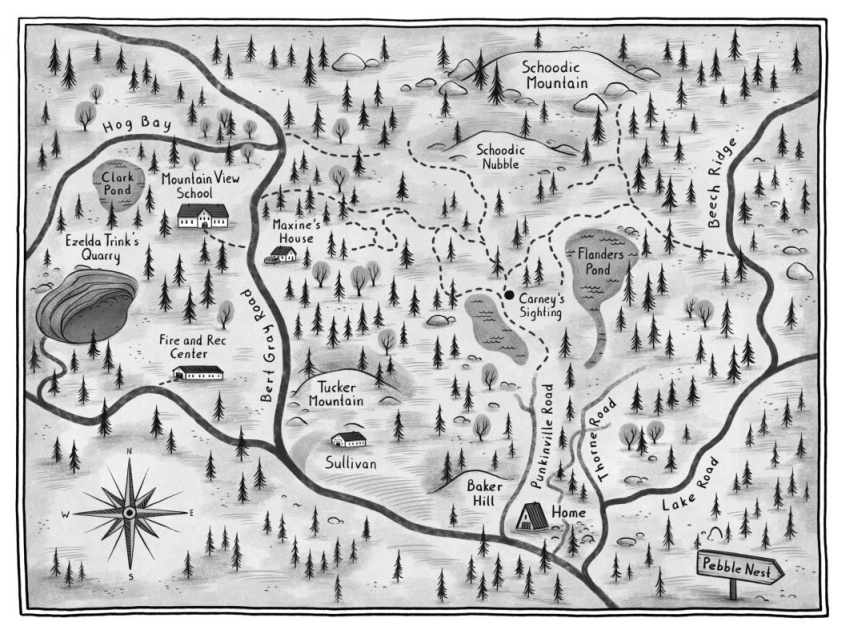
Map from Anybody Here Seen Frenchie? Illustration © Ramona Kaulitzki
Write Away! Ideas to prompt writing
Anybody Here Seen Frenchie? introduces readers to a cast of characters who face challenges yet find a way to gain something positive from their struggles. Write about someone you know who makes the world a better place despite the obstacles they face, or because of them.
Who is your favorite character in the story? Why? Use examples from the story to explain.
Aurora says, “Trying to fit in does not work. It means folding yourself up into some shape that doesn’t feel like you.” Have you ever felt this way? Explain.
Aurora says of Frenchie: ““He doesn’t talk with words. At all. So you have to look for his answers.” How does Aurora look for Frenchie’s answers? Do you know someone who talks without words? How do you look for their answers?
In the height of the search for Frenchie, Jewell reflects, “A path is a sweet discovery. It’s already there for us, so we take it.” Does this ring true for you? Discuss.
Aurora says, ““We hug—oh my gosh, we hug! It’s not that perfectly happy sort of hugging. It’s more like, time to glue ourselves together.” Describe hugs you give or receive and what they feel like to you.
Poetry Break Related poetry to recite before or following the reading of this book
Poetry breaks fit perfectly into brief moments in the day—from opening or closing the day to lining up for lunch; from zipping up backpacks and jackets to transitioning from one subject to the next. Reading a poem typically takes less than a minute, yet it can introduce or reinforce a concept, provide clarity, celebrate language, exemplify rhythm, enhance vocabulary, expand understanding, increase attention span, initiate reflection, spark imagination, or simply summon a giggle. And, poetry soothes and strengthens the spirit.
A poem woven throughout Anybody Here Seen Frenchie? plays an integral part in the story. Trace the poem as it develops in the story. Discuss its meaning and importance to Aurora and Frenchie.
In the Author’s Note, Leslie offers a photograph of a poem barn showcasing the 30’x40’ stenciled poem by artist Mark Mendel that provided inspiration for her story. Learn more about Mendel’s poem barns and others gracing the countryside across the country.
And Then There’s This…
Enrichment activities, related books, online resources, craft projects, and ideas for further study
Be sure to check out the in the Extension Activities found in the Anybody Here Seen Frenchie? Discussion Guide.
Find an interview with Leslie and resources for A Home for Goddesses and Dogs on a previous Children’s Book Corner blog post.
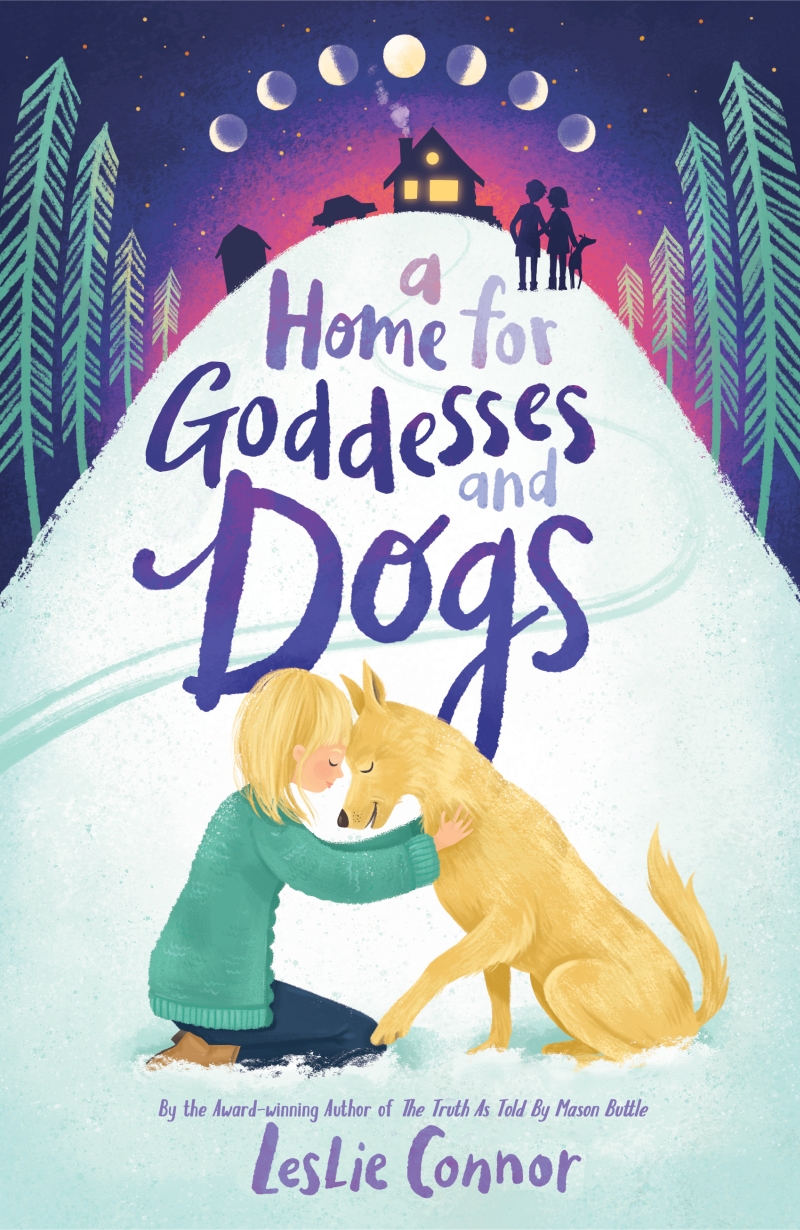
Related Books of Interest
Leslie is the two-time recipient of the American Library Association’s Schneider Family Book Award which recognizes “an author or illustrator for a book that embodies an artistic expression of the disability experience for child and adolescent audiences.” Leslie received the award in 2009 for Waiting for Normal and in 2019 for The Truth As Told by Mason Buttle.
Discussion Guide for The Truth as Told by Mason Buttle
In 2022, the American Library Association’s Schneider Family Book Award honored the following books:
· My City Speaks by Darren Lebeuf, illustrated by Ashley Barron (Young Children’s Winner)
· A Sky-Blue Bench by Bahram Rahman, illustrated by Peggy Collins (Young Children’s Honor)
· A Walk in the Words written and illustrated by Hudson Talbott (Young Children’s Honor)
· A Bird Will Soar by Alison Green Myers ((Middle Grade winner)
· A Kind of Spark by Elle McNicoll (Middle Grade Honor)
· Stuntboy, in the Meantime by Jason Reynolds, illustrated by Raúl the Third (Middle Grade Honor)
· Words in My Hands by Asphyxia (Teen award)
· A Face for Picasso: Coming of Age with Crouzon Syndrome by Ariel Henley (Teen Honor)
The American Library Association put together A Select Biography of Children’s Books About the Disability Experience.
See also this previous Children’s Book Corner post.
Meet the Author
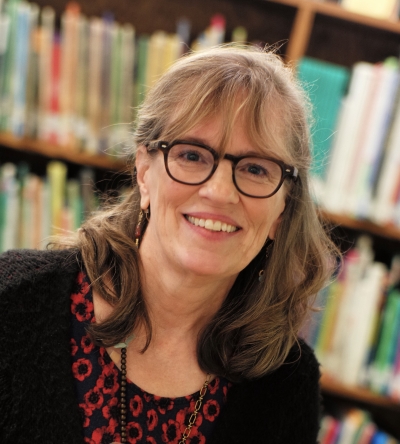
Backstory: Q & A with Leslie Connor
Judy Bradbury: How did you come to write Anybody Here Seen Frenchie?? What seeded its creation?
Leslie Connor: My story ideas come from convergence and coincidence and a little serendipity. I’d been thinking about middle school friendships (I always am!) and how intense that can be, especially if there is a particular bond between the friends. In this story, both Aurora and Frenchie are neurodiverse. I had a question in my mind: what happens when one friend becomes better able to use strategies that expand their social circle? Can we outgrow a friend?
JB: Aurora and Frenchie, and so many of the secondary characters, filled my heart as I read this novel. How did you conceive of and develop the characters?
LC: Thank you for saying so! Characters are the most important part of a story. I’m aware of them as composites of people I have known, read about, or can imagine. But they are never rigidly biographical—not even close—and I think that’s how they become themselves! I love to figure out what matters to each player—what motivates them, irks them or gives them joy—and I hold those things in mind as I work. Also, I believe my characters are real. (I really do.)
JB: Early in the book, Aurora is venturing into the school building on the first day of the year, knowing that her best friend Frenchie will not be in her class. She thinks, The best thing about the first minutes of the first day of school is nothing has gone wrong yet. I bolted into that room to see if I could find kids to match up with. Like, get a spot at their table. That’s always kind of hard for me. Trying to fit in does not work. It means folding yourself up into some shape that doesn’t feel like you. In just a few sentences you bring the reader deep into the weeds of who Aurora is. You give her a voice. Frenchie, who is nonverbal, is developed through Aurora’s eyes, his actions, and somewhat through his thoughts. How did you decide on the structure of the novel?
LC: Yes, those lines suggest elements of her backstory, and that can be hard to weave in. I remember writing this story in vignettes at first, but the result was disjointed. My editor suggested adding transitions. (She was right!) I always heard Aurora as the primary narrator. (She appointed herself to that role!) But I knew at the onset that I wanted to intersperse chapters from characters in the town (Carney Huggins, Jewelle Laramie, Maxine Thrift) and those passages supplied tension to the plot. (Nothing like a near miss in the middle of a search to make the reader squirm.) Frenchie’s point of view chapters came to me much more slowly, which seems parallel with the process of gaining insight into non-vocal, autistic people in real life. Hard, fast conclusions would not do. (My humble opinion.) Frenchie’s chapters are important relief for the reader; they see he’s not as worried about himself as everyone else is.
JB: To my mind, the theme in Anybody Here Seen Frenchie? is the idea that real friendship fosters growth, laying the foundation and providing support for becoming better versions of ourselves. Sometimes that leads to growing apart. You adeptly provide the middle grade reader epiphanies throughout this story. Can you talk about that?
LC: I agree with you about friendships, and growing. Spot-on! For all the suffering I was going to put Aurora through, I felt I owed her trustworthy adults to help her string together a few concise lines to contain those moments of dawning. Aurora’s epiphanies also needed to provide open spaces for self-forgiveness. That’s pretty important when you are eleven.
JB: Tell about one hurdle you experienced in the creation of Anybody Here Seen Frenchie? or provide a memorable (or humorous!) anecdote related to the writing of the novel.
LC: The highest hurdle might be that I am not autistic. I had to ask myself if I could write authentically about characters on the spectrum. I took that deep dive into the research, which fueled the characters and the story. Then I turned to authenticity readers, who reminded me that there are challenges to loving someone on the spectrum.
JB:What did you learn from writing Anybody Here Seen Frenchie??
LC: This quickly becomes a much bigger question than it seems!
I learned a lot about autism, or course, all the while realizing it’d take a master’s thesis to cover all the science, every nuance, the vastness, and that which is still unknown about this area of neurodiversity. That’s beyond my scope.
Still, pieces of the research planted firmly in my heart.
There was a line I found repeatedly: Show me one autistic kid and I’ll show you one autistic kid. This speaks to the stunning breadth of autism spectrum disorder, and informed the differences and similarities between Aurora and Frenchie. I am adamant about putting the character before the disability and letting that unfold. I trust the reader to do the observing. (I do not identify Aurora or Frenchie as on the spectrum in the text of the novel. Frenchie is identified only in the flap copy.)
JB:What do you hope readers will take away from Anybody Here Seen Frenchie??
LC: I always want readers to have that good, immersive experience, meaning, the characters should feel real, like someone’s neighbors—if not your own. I want readers to feel transported to the setting—to the natural world in a coastal town in Maine. I hope they’ll be inspired to observe. That’s a useful, open-ended skill. Finally, I would love for readers to be inspired to write beautiful sentences of their own.
JB:What would surprise readers to learn about you or about the writing of Anybody Here Seen Frenchie??
LC:
- I have seen the piebald deer with my own eyes! (See photo below.)
- This story will make you worry.
- This story might make you cry.
- I would never write a bleak book and leave you feeling devastated. (You and your heart can trust me.)
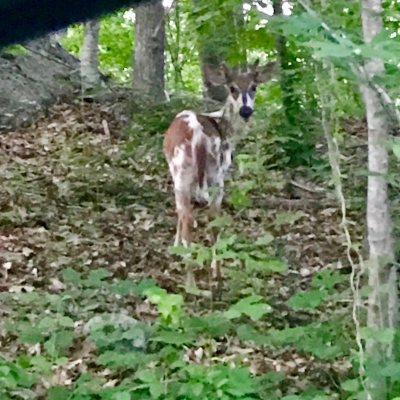
JB:What project are you currently working on?
LC: I’m working on a new novel, a sister story. (Great middle grade territory!) My main character is a youngest child by some distance, and her family is suddenly facing a surprising change. This story is about how everyone accepts, or fails to accept, that challenge. It’s still new for me, but I am very interested in the influence of birth order.
About the Illustrator
Sidebar Spotlight New releases of note
Each month I receive several boxes of books to review from various publishers. As I read and peruse the books, I place them in two piles: those that I will consider featuring on the blog, and those that don’t fit the mission or theme of Children’s Book Corner blog for whatever reason. Some of the books in the “possible” pile I highlight on Mondays (most weeks) on Instagram. Ultimately, I have to choose the one new release I will feature on my monthly blog post. Yet, there are many worthy books I wish I could give a shout-out to, even if I can’t write an entire post about each one. So, this month I introduce Sidebar Spotlight as a means of giving a nod to new releases that, in my humble opinion, are worthy of note. I’ve linked each title to Bookshop so you can learn more. Happy reading, friends! And let me know what you think.
- Blue by Nana Ekua Brew-Hammond, illustrated by Daniel Minter is a lushly illustrated, appealing “History of the Color As Deep as the Sea and as Wide as the Sky” geared for Grades 2-4.
- The Happiest Kid by Sarah Bagley Steele, illustrated by Elsa Pui Si Lo and Clarice Yunyi Cai is an affirming picture book for Pre-K-Grade 2 about a usually happy and carefree child who one day experiences unexpected gloom. As the story evolves, she finds her way toward exploring and accepting her feelings. “Everyone feels sad sometimes, and that’s okay.” Releases 3/15/22.
- One Kid’s Trash by Jamie Sumner is a novel about a small-in-stature but smart and earnest kid who suddenly becomes adopted by the cool crowd—all because of his knowledge of garbology, “the science of studying a person’s trash to uncover their deepest wishes and secrets.” This funny and thoughtful novel released a few months ago is recommended for middle grade readers.
- This Is the Tree We Planted by Kate McMullan and illustrated by Allison Friend is a paean to trees, offering young children insight into the crucial role they play in the larger ecosystem. Pre-K-Grade 2.
- Tree House Station Book 4 in Dee Romito’s Fort Builders, Inc. series has released. Learn more about this early chapter book series and read an interview with the author on this previous Children’s Book Corner post.
News & Updates
Every Child a Reader and the Children’s Book Council announced that the 2022 Children’s Book Week takes place May 2–8 and November 7–13. This year’s theme “How Do You Book?”promotes conversations with children about why they choose to read the books they do. Also, plans are underway to celebrate the first annual Floyd Cooper Day on May 6, in honor of the late children’s author/illustrator. Children’s Book Week posters and activities are available free to homes, schools, and libraries. Register here.
Download the 2022 USBBY’s Outstanding International Books list and the bookmark.
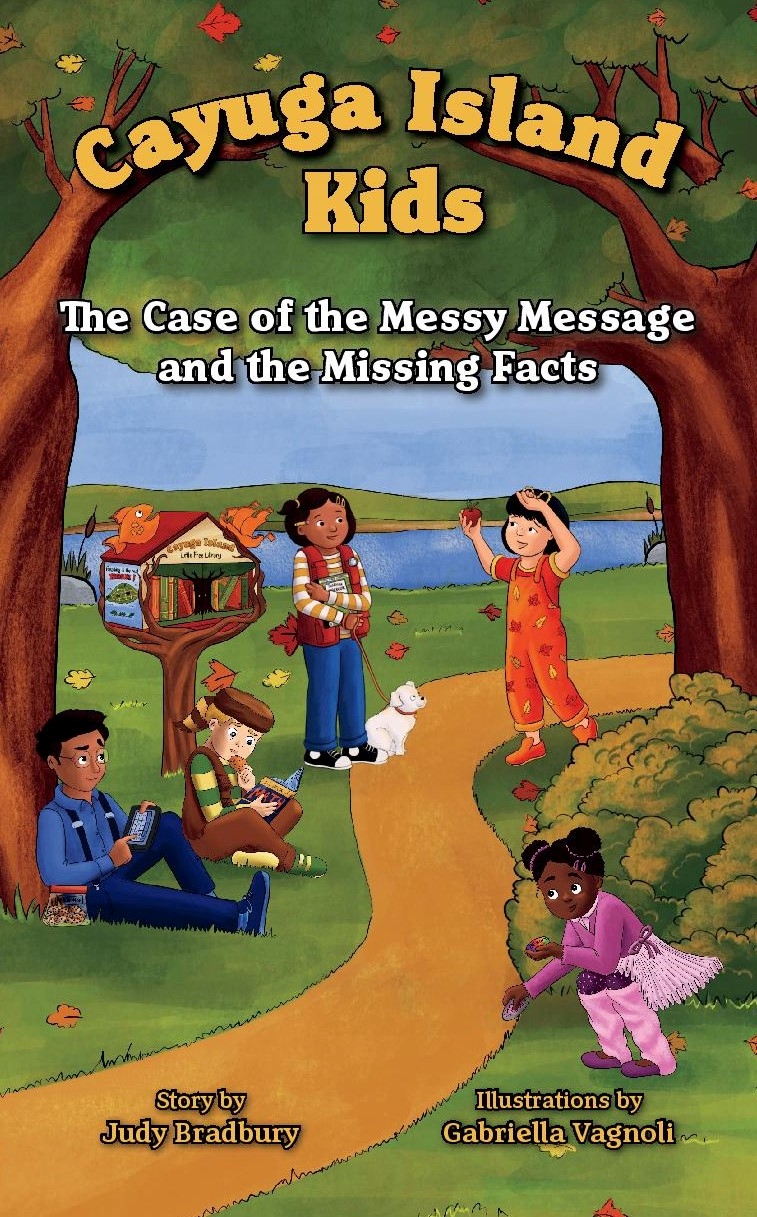
Book 3 of the Cayuga Island Kids chapter book series hits the shelves in May! Learn more about the book and read the advance praise.
View the book trailer.
Pre-order a copy of The Case of the Messy Message and the Missing Facts and be entered in a raffle to receive swag to go along with the book!
Click here for a spot featuring the Cayuga Island Kids series in City of Light Publishing’s February 2022 newsletter.
I am delighted to be featured on the Writing and Illustrating blog in three installments discussing the Cayuga Island Kids series writing journey: March 3, April 3, and then on May 1, when we celebrate the release of Book 3! Book giveaway with each post!
Find news and information on my upcoming events.
Final Thought
“Sun, rain, wind swept/ blossom, blossom, blossom/ sweet earth, roots kept.” ~ Mark Mendel

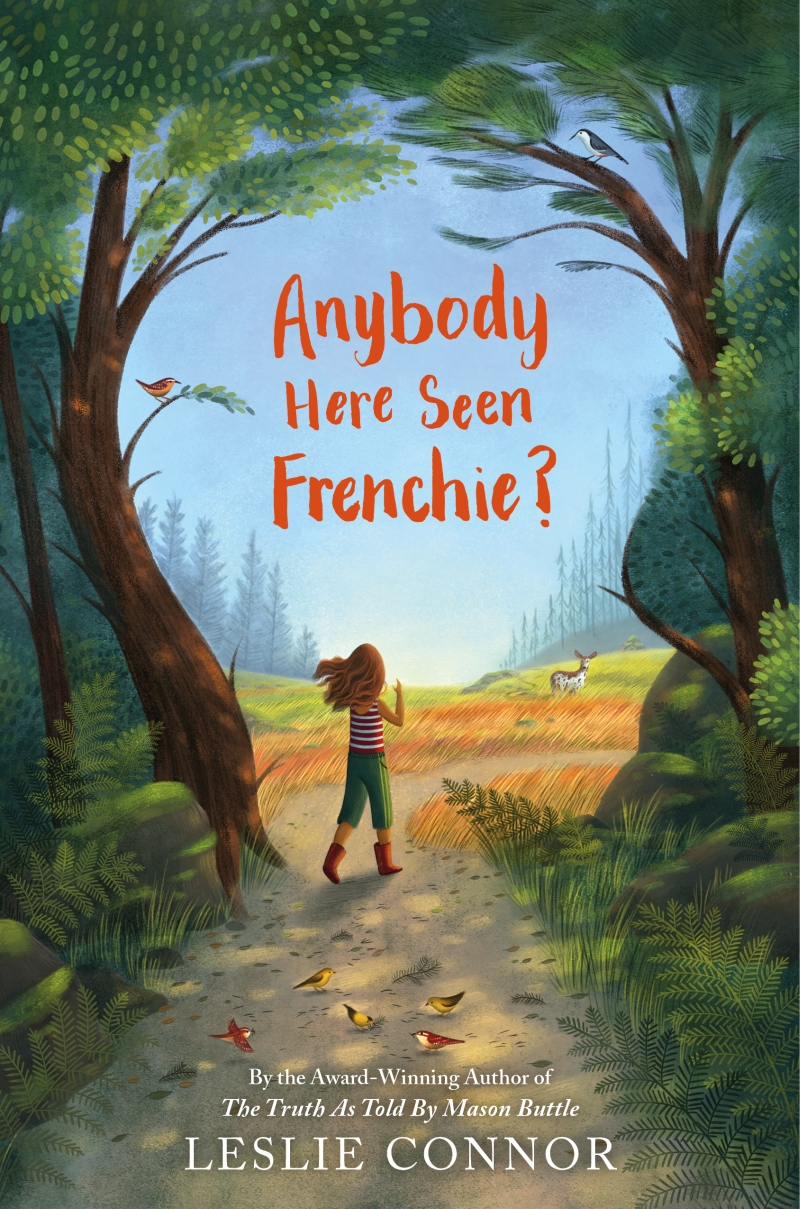
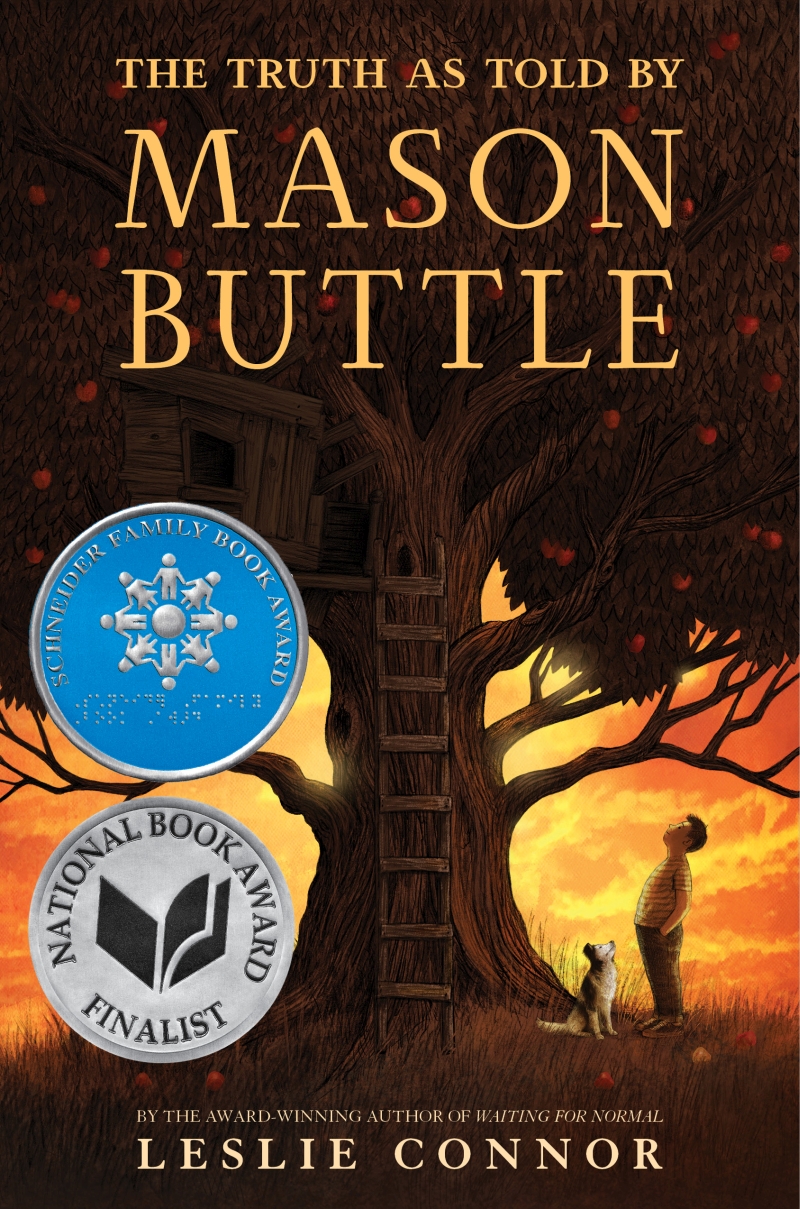
I love Children’s Book Corner–and the books you choose. You bring to my attention books I might not otherwise have noted, and I have enjoyed the ones I’ve read.
I also love all the links you provide. I listened to the interview with Leslie Connor recorded in May 2020, and saw that it was part 1 of 4, so I tracked down the other 3 (each about 15 minutes long). She talked to Washington librarian Tammy LaPlante, who asked wonderful questions, mostly about THE TRUTH ACCORDING TO MASON BUTTLE (a book you recommended that I thoroughly enjoyed), but one of the last questions on the last segment
https://www.youtube.com/watch?v=yPd3-jHnXMs
was about what Leslie was currently working on–and it was ANYBODY HERE SEEN FRENCHIE? So cool to hear about this book while she was actually writing it!
Thanks for this informative and interesting site, Judy!
Thanks, Vivian, for this kind and in-depth comment. I love that you listened to all four segments of Leslie’s interview with Tammy LaPlante; indeed, in the last segment they not only discuss her work-in-progress on ANYBODY HERE SEEN FRENCHIE? but also her then-new release GODDESSES AND DOGS which Leslie and I talked about in a Children’s Book Corner post upon its publication. I will add the information you provided to this post so that others who are so inclined can take advantage of the full interview. Thanks, as always, for visiting my blog!